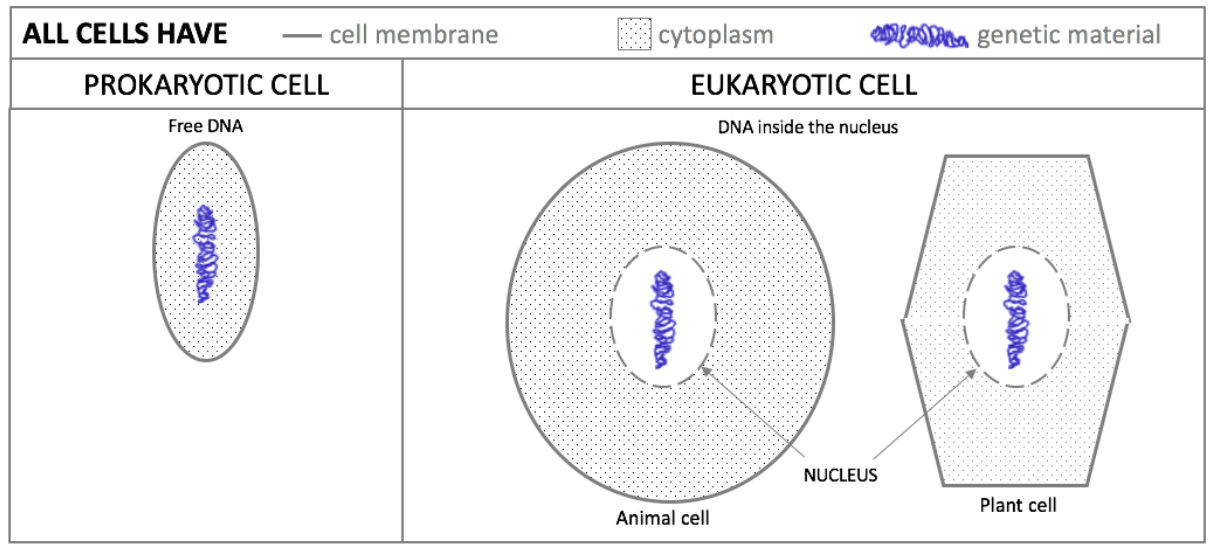Biology and Geology.Teoría,
actividades y prácticas de laboratorio. 1º ESO Programa SELE • María
del Mar Vera Sánchez
Contents and activities
UNIT 6. The biosphere
6.2. STRUCTURE OF CELLS
Cells are the smallest unit of life, so they have the characteristics of living things.
Although there are various types of cells, all of them have three main parts:
- Cell membrane: it covers the whole cell; it is a thin layer made up of lipids and proteins.
- Cytoplasm: it is a jelly-like substance.
- Genetic material: it consists primarily of DNA which contains the hereditary information.
There are two types of cells:
- Prokaryotic cells: DNA is free in the cytoplasm.
- Eukaryotic cells: DNA is inside the nucleus, so DNA is separated from the cytoplasm; the nucleus is a membrane with pores.

RIBOSOMES (•) are represented as small points inside the cytoplasm. They are in prokaryotic and eukaryotic cells but prokaryotic ribosomes are smaller than eukaryotic ribosomes. They make proteins (one type of organic biomolecule).
 YouTube: RicochetScience “Prokaryotic Vs. Eukaryotic Cells”
YouTube: RicochetScience “Prokaryotic Vs. Eukaryotic Cells”
 YouTube: Nucleus Medical Media “Biología: estructura celular”
YouTube: Nucleus Medical Media “Biología: estructura celular”
